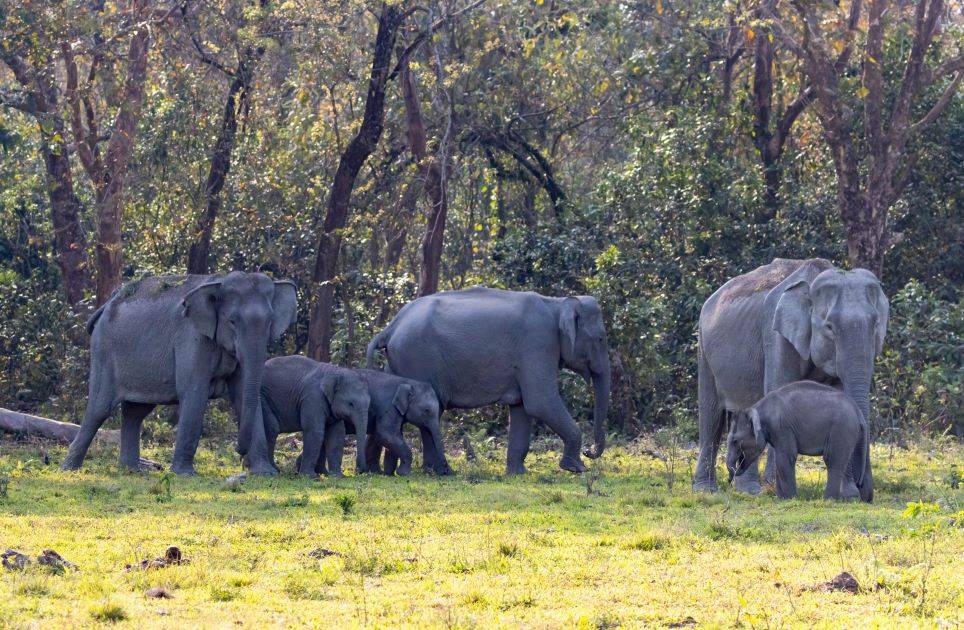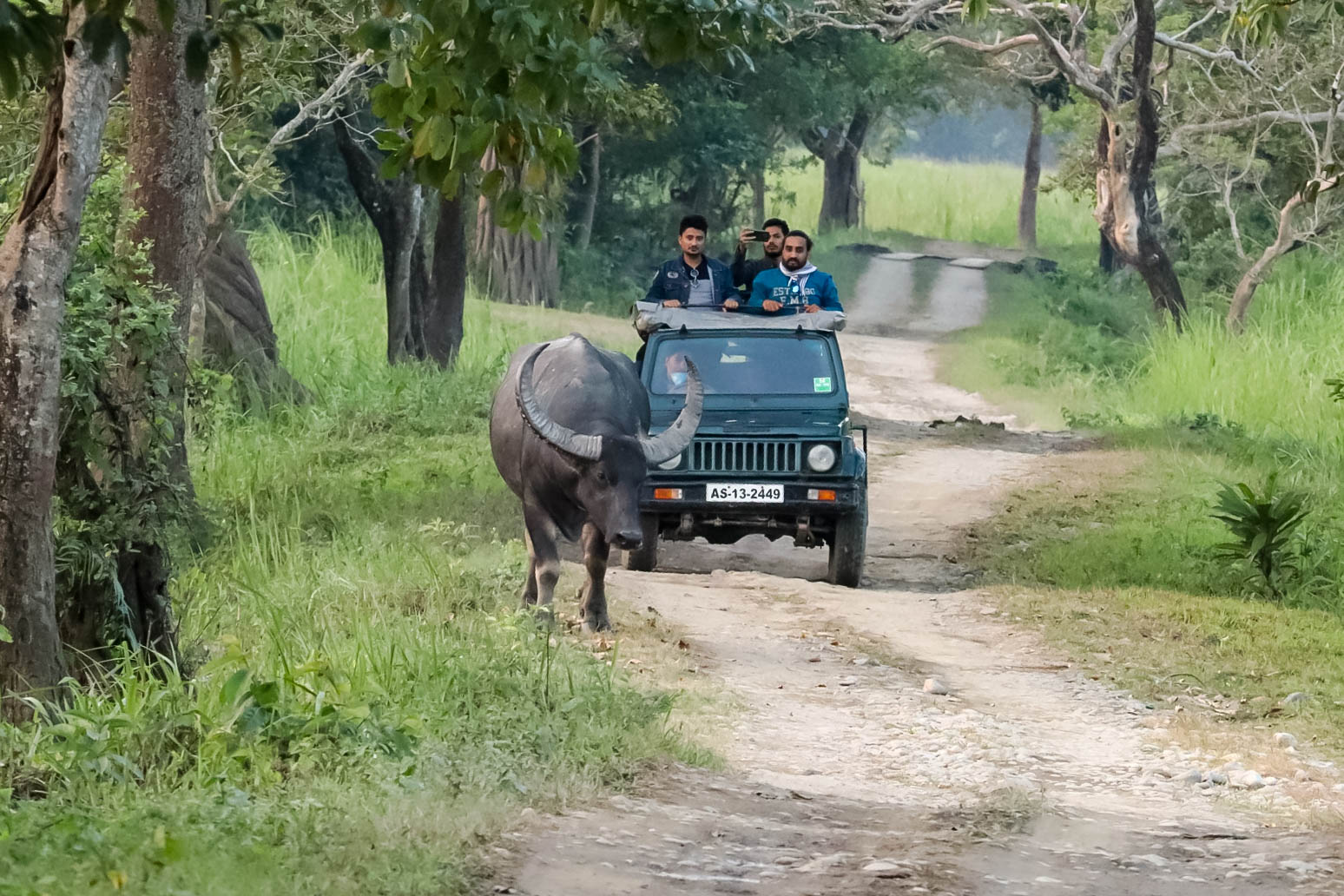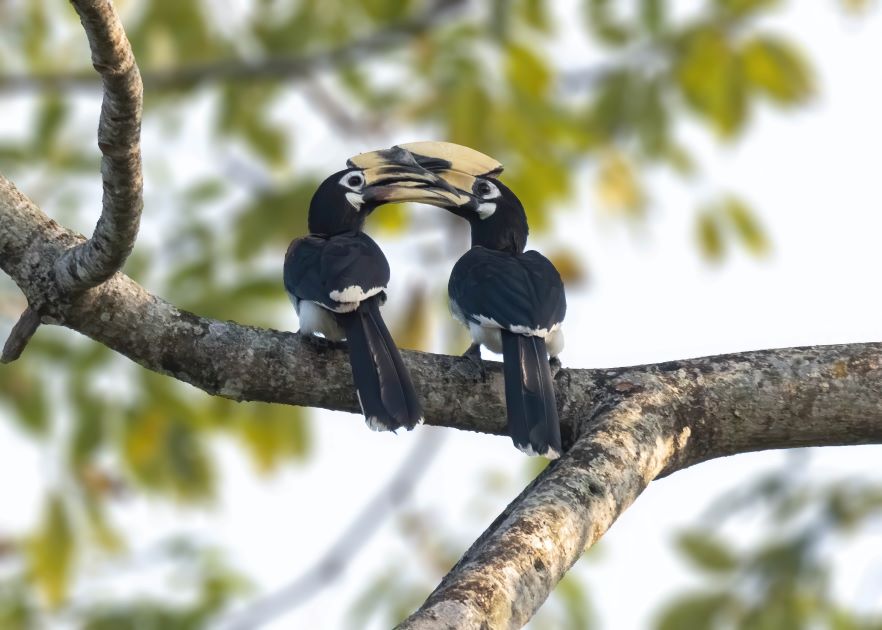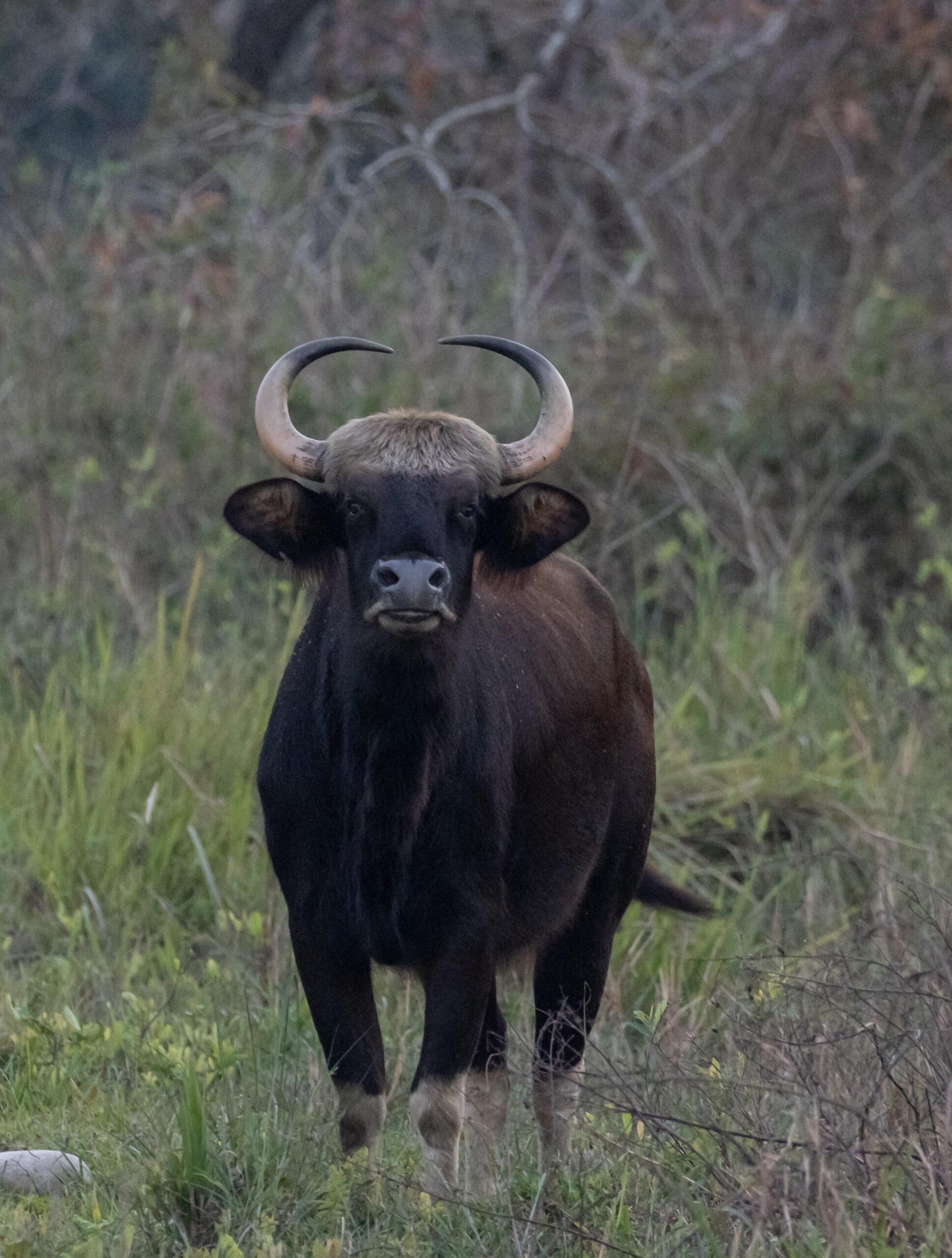Manas National Park, situated in Assam, India, is a UNESCO World Heritage Site, a Project Tiger Reserve, an Elephant Reserve as well as a Biosphere Reserve. The name Manas derives from the Manas river, a major tributary of mighty Brahmaputra. Sprawling in a massive area of 950 sq.km., Manas shares its boundary with the Royal Manas National Park, Bhutan. The breathtaking scenic beauty of Manas National Park attracts thousands of tourists and nature lovers from every part of the world. A home to approximately 450 species of birds, 50 species of reptiles, 55 species of mammals and few species of amphibians, the park is also a major habitat of One Horned Rhinoceros, Indian Elephant, Royal Bengal Tiger, Leopard, Gaur (Indian Bison) and Asiatic Water Buffalo. Manas is also famous for some rare species of mammals like Assam Roofed Turtle, Hispid Hare (Assam rabbit), Golden Langur and Pygmy Hog. Critically Endangered birds like Bengal Florican and White Bellied Heron are also found in the park. Moreover, the combination of Sub-Himalayan Bhabar Terai and the Himalayan Subtropical Broadleaf Forest make Manas National Park is one of the richest biodiversity in India. There are almost 543 plant species found in the core area of the park.

History of Manas National Park
In the year 1905, the area of Manas was declared as a Reserve Forest. In 1907, Manas was declared as a Reserve Forest which was known as Manas Reserve Forest and North Kamrup Reserve Forest. On 1st October, 1928, total 360 sq. km. of the forest was designated as a Wildlife Sanctuary. Thereafter in 1973 Manas was declared as a Project Tiger Reserve covering 2837 sq. km. The UNESCO declared the site as a “World Heritage Site” in the year 1985. In 1987 Manas Wildlife Sanctuary was declared as a Biosphere Reserve. Thereafter in the year 1990, Kahitama Reserve Forest and Panbari Reserve Forest were also included with Manas to create a National Park and on 7th September of the same year, the Manas Wildlife Sanctuary was declared as the Manas National Park. Thereafter in the year 2003, Manas National Park was declared as Chirang-Ripu Elephant Reserve under Project Elephant.
Things to do in Manas

Jeep Safari:
Jeep safari in the Manas National Park is a thrilling experience. You will be definitely lost in the wilderness of Manas while on a jeep safari. The jeeps would take you into the dense jungle where you would get to see some rare species of mammals like One Horned Rhinoceros, Indian Elephant, Gaur, Asiatic Water Buffalo, Pygmy Hog, Assam Roofed Turtle, Swamp Deer, Hog Deer etc. and varieties of resident as well as migratory birds. The jeep safari zones of the park are: Bansbari zone, Bhuyanpara zone and Panbari zone. Safari timing is 9:00AM to 12:00 Noon and 2:00PM to 5:00PM.
Elephant Safari:
The charm of an Elephant safari is a bit different. Enjoying the wildlife on an elephant back is an awesome experience. Elephants would take you to some inaccessible areas of the park which are not motorable.
River Rafting:
River rafting in the Manas river, which is flowing beside the park, is one of the adventurous activities you can experience while visiting Manas National Park.
Tea Plantation visit:
The greenery of the tea gardens adjacent to the Manas National Park is one of the major attractions for the tourists from across the globe. Assam is famous for its tea and you will get to see one of the tea gardens just next the gate of Bansbari range of the park. If you are lucky enough, you will get an opportunity to enjoy the festivals of the local Bodo people.
Bird watching:
If you are a birdwatcher, Manas is one of the best places to visit. The core area and also the buffer areas of the park are some very good habitats of varieties of rare and endangered bird species. Manas National Park is the largest habitat of Critically Endangered, Bengal Florican. Moreover, birds like Hornbills, Eagles, Falcons, Pheasants, Harriers, Herons, Broadbills, Robins, Bee-eaters etc. are some of the common sightings in and around the park. The Indian Peafowl, the National bird of India is also found abundantly in Manas.

Best time to visit:
October to May is the best time to visit the park. However, in rainy season the park remains closed for tourists.
How to reach:
Lokapriyo Gopinath Bordoloi International Airport, Guwahati is the nearest airport of the Manas National Park. Regular flights are available from all the major airports of India to Guwahati. The distance by road from Guwahati to Manas is 176 kms. You can easily hire a cab from Guwahati to Manas. The nearest Railway Station is Barpeta Road which is 32 km away from Manas.
Accommodation:
There are many cottages and lodges around the National Park which give you a comfortable stay. You can choose one of them as per your budget. However, most of them remain booked during the peak season. Therefore, make sure to pre-book one before your visit.

FAQs
- What is Manas National Park famous for?
Manas National Park is famous for its biodiversity. Here you can get 543 species of different plants, 450 species of birds, 50 species of reptiles, 55 species of mammals and few species of amphibians.
- When was Manas declared as National Park?
Manas was declared as a National Park on 7th September, 1990.
- Where is Manas National Park situated?
Manas National Park is situated in Chirang and Baksa districts of Assam, India.
- What is the best time to visit Manas National Park?
October to May is the best time to visit Manas National Park.
6 thoughts on “Manas National Park – UNESCO World Heritage Site”